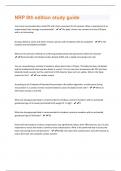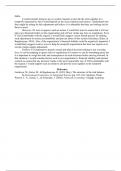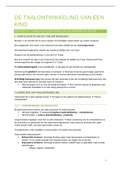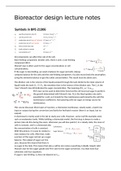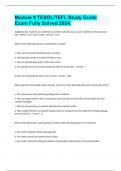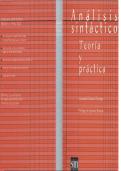Biol113 – Genetics
ALL NOTES
Chapter 1 Contents
L1 – Mendelian Inheritance + role of meiosis in determining inheritance patterns .............................. 2
L2 – Linkage, Recombination + Deviation from Mendelian Ratios ......................................................... 3
L3 – Chromosomal Abnormalities ........................................................................................................... 4
L4 – The Molecular Basis of Inheritance ................................................................................................. 6
L5 – Frome Gene to Protein .................................................................................................................... 9
L6 – The Mechanism of Protein Synthesis ............................................................................................ 10
L7 – Mutation, mutagens + DNA repair ................................................................................................ 12
L8 – Single Gene Disorders.................................................................................................................... 13
L10 – Bacterial Genetics ........................................................................................................................ 15
L11 – Gene Expression in Eukaryotes ................................................................................................... 18
L12 – Genetics of Development ............................................................................................................ 21
, 2
L1 – Mendelian Inheritance + role of meiosis in determining
inheritance patterns
Gregor Mendel 1st Law of Segregation: 2 forms of a gene present in each parent segregate
independently
Offspring receives 1 allele from 1 gamete from each parent
Monohybrid cross results:
1. 2 true breeding individuals with differing phenotype bred together
2. F1 gen = all hybrids express dominant allele
3. F2 gen = 3:1 ratio of dominant:recessive
Mendel’s Model:
• Alleles cause variation in inherited characteristics
• Offspring inherits 2 alleles, 1 from each parent for each character
• the dominant allele determines the phenotype if the allele differs
• alleles are discrete + do not blend
• 2 alleles segregate during gamete formation
Mendel’s Law of Independent Assortment: different genes get assorted independently of each
other
• Looks at pairs of alleles -> dihybrid cross:
1. 2 trur breeding individuals with differing phenotypes bred together YYRR x yyrr
2. F1 gen = all offspring YR phenotype
3. F2 gen = 2 old phenotypes – YR, yr = parental
2 new phenotypes = Yr, yR = recombinants
If no independent assortment:
1. YR + yr are linked
2. Only YR and yr gametes
3. F1 gen = YR
4. F2 gen = YR and yr offspring in 3:1 ratio as no recombinant phenotypes
The Chromosome Theory of Inheritance (Walter Sutton): pairs of chromosomes separate during
meiosis
• Heritable factors at loci on chromosomes
• Chromosomes undergo segregation + independent assortment
Somatic cell: any cell in organisms except reproductive cells
Homologous pair: 2 chromosomes inherited from each parent
Chromatid: 1 of 2 identical strands of newly replicated chromosome
Sister chromatids: 2 identical chromatids help together by a common centromere
, 3
Meiosis = only occurs in non-somatic cells, consists of interphase 1 + 2 cell divisions, 4 non-identical
haploid cells produced, synapsis only in meiosis
Meiosis 1 = homologous chromosome separate
Meiosis 2 = sister chromatids separate
Observations:
• Chromosomes in pair in non-somatic cells
• Chromosome pairs segregate equally
• Different chromosome pairs assort independently
Genetic Variation: mutations, independent assortment, crossing
over, random fertilisation
L2 – Linkage, Recombination + Deviation from Mendelian Ratios
Crossing over:
Crossing-over: the process of genetic recombination that gives rise to new combinations of linked
genes
- Occurs during pachytene phase of prophase 1
Pachytene: chromosomes are zipped up + look like thick thread
1. Synapsis: pairing of homologous chromosomes
2. Formation of synaptonemal complex: holds homologous chromosomes together in tetrad
3. Genes cross over at chiasms producing recombinant chromosomes with new combinations
of linked genes
Recombinants:
Recombinant phenotype: combination of phenotype differs from parents (always lowest frequency)
- Due to independent assortment for genes on different chromosomes + crossing-over for
genes on the same chromosome
Recombinant Frequency: percentage of progeny that inherit a combination of alleles that differs
from either parent RF = total no. of recombinants x 100/ total no. of progeny RF < 50%
- Depends on whether the genes are on the same or different chromosomes
- When genes on the same chromosome, recombinants only due to crossing-over
+ = wild gene
Percentages won’t add up due to multiple crossing over events
Coupling vs Repulsion heterozygote:
Coupling heterozygote: wild genes on same chromosome, mutants on other
Repulsion heterozygote: 1 wild gene + 1 mutant on each chromosome
Largest phenotype frequency = parental
Chromosome linkage maps:
1% RF = 1cM
Genes further apart = more likely to stay together during crossing over
Deviations from Mendelian ratios:
- Sex-linkage
- Incomplete dominance: dominant allele does not completely mask the effect of a recessive
allele at the same locus

